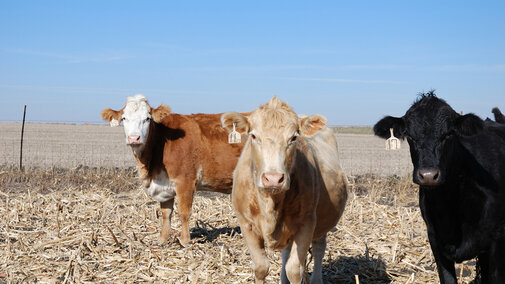Lease Agreements: Verbal vs. Written
There are a couple of leasing options for producers and landowners. Verbal leases are a common form of lease agreement. However, if someone is considering terminating a verbal lease, there are some dates and rules to remember for those with crops vs. pasture verbal lease agreements.
The Nebraska Supreme Court has ruled that the lease year begins March 1 for year-to-year verbal leases. Notice to a tenant to vacate under a verbal or handshake year-to-year lease must be given six months before the end of the lease or no later than Sept. 1 for crop production. It is recommended that Registered Mail™ terminate the farmland lease. This means the person receiving the letter signs for it, providing evidence that the termination notice was received.
Handshake or verbal leases are different for pastures. The typical pasture lease is for the five- to six-month grazing season. The lease is only in effect for that time, so the lease is terminated at the end of the grazing season. However, different lease length arrangements can be made in a written lease.
In all instances, written leases would be preferred over oral or “handshake” leases. Sample leases are available in the Ag Lease 101 Document Library and can help both parties start thinking about the appropriate lease conditions for their situation.
Grazing for Interseeding
Pastures and hay meadows provide higher quality feed, are more productive, and require fewer inputs when they have good forage legumes growing in them.
Outside of moisture, nitrogen is often the limiting nutrient in pasture production. While commercial fertilizer may be a quick and easy option, it’s costly. Instead, let’s grow our own N using legumes.
Do you have a pasture area or hay meadow that is relatively free of weeds and makes up no more than about 15% of your total pasture acres? If so, here is what I want you to do. From now until that grass will grow no more this year, graze that grass hard. Grub it down, then graze it some more.
Now why would I recommend overgrazing? Surely it will hurt the grass. Well, that's exactly what we want. Next spring, you will interseed legumes like red clover, white clover and alfalfa into that grass to make it more nutritious and productive. We may even consider a winter frost seeding if conditions are right.
The biggest challenge to establishing legumes into a grass sod is competition by that existing grass on new, slow-growing legume seedlings. Anything you do to reduce competition and slow down grass growth will help. Overgrazing this fall prior to next spring’s seeding will weaken the grass and slow its spring growth, thus giving new legume seedlings a better chance to get started. Areas that experienced drought this summer may have seen unplanned overgrazing this summer; interseeding may be a way to make some lemonade out of that particular lemon. Of course, all this depends on moisture next spring to work.
While you’re at it, also collect some soil samples. Then analyze them and apply any needed fertilizer. Legumes, especially, need good phosphorus and the proper soil pH.
So, add some legumes to your pasture next spring. Graze your grass this fall until virtually nothing is left. Then, keep grazing a couple weeks more just to make sure. Legumes you add next spring will establish better because of it.
Grazing Drought-stressed Crop Residue
Grazing drought-stressed crop residue and moisture-stressed pivot corners can be a feed source opportunity but may also have possible nitrate concerns and rapidly declining residue quality. Also, shorter grass pastures may be motivating producers to begin earlier fall crops residue grazing.
When it comes to stalks residue, grain sorghum stover will retain nutrient grazing value longer than corn. This year, quickly declining stalks quality may trigger earlier residue grazing for corn and sorghum soon after grain harvest with both residues, providing good nutrition for mid- to late gestation cattle following fall harvest.
Although both residues provide the highest nutrient content soon after grain harvest, prioritize grazing cornstalk fields first. Corn leaves tend to detach from stalks within one to two months after harvest and then blow out of stalk fields; thus, lowering grazing nutritional content. In contrast, grain sorghum stover leaves remain attached to stalks much longer into the winter and early spring retaining nutritional value.
Previous grain sorghum yields can be used to set optimum grazing stalking rates. For example, grazing rates might be one acre per cow per month for every 100 bushels of harvested sorghum. Unlike corn residue, grain sorghum stover can have prussic acid toxicity along with possible nitrate toxicity risk, especially if cattle are forced to graze the lower eight inches of drought-stressed stalks. To reduce nitrate risk, do not force cattle to completely graze lower stalks, and delay initial cattle turnout into stressed stalk fields until afternoons with at least partially filled rumens. To reduce prussic acid risk, limit or delay grazing of sorghum stover if tiller regrowth is occurring at the base of sorghum stalks. Pause grazing stressed sorghum stalk fields for one week following the first fall frost where temperatures do not drop low enough to actually kill sorghum.
More crop residues research information is available on CropWatch and UNL Beef.

